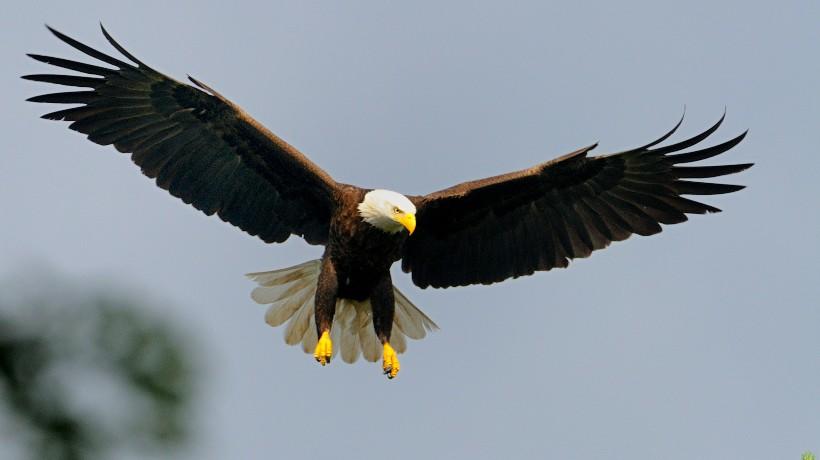MassWildlife’s Natural Heritage and Endangered Species Program conserves and protects the most vulnerable animal and plant species of Massachusetts and the habitats upon which they depend.
Description
Common name: Bald eagle
Scientific name: Haliaeetus leucocephalus
Size: 3 feet in length with a 7-foot wingspan, 8–15 pounds
Range: Alaska and Canada south throughout the United States to Florida and Baja California
MA Conservation status: Special concern
Federal conservation status: Not listed (delisted in 2007)
Fun facts
- The bald eagle is the largest nesting bird of prey in Massachusetts, with a wingspan of at least 6 feet, sometimes more than 7 feet.
- In the wild, bald eagles may live 20 years or more. The oldest wild individual on record lived 38 years.
- The eagle first appeared as an American symbol on one of the first U.S. coins, a copper piece minted in Massachusetts in 1776. The bald eagle became our national bird in 1782.
- In Massachusetts, mated pairs of bald eagles construct their nest, or fortify the previous year’s nest, primarily from December through February, in preparation for egg laying in March or early April. Scout for eagle nests in coastal areas or near large inland rivers, lakes and reservoirs.
Threats and conservation
- Historically, the bald eagle was not only revered, but also persecuted by people who viewed it as competition for fish and a threat to poultry and game birds.
- From the 1940s until it was banned in 1972, the pesticide DDT caused egg mortality and further decline of the bald eagle.
- Restoration of the bald eagle in Massachusetts began in the 1980s, when MassWildlife and other partners transported young eaglets from wild nests (mostly from Canada) and raised them in cages overlooking the Quabbin Reservoir. Once the birds were ready to fledge, the cage doors were opened and the eagles released.
- Release of captive-born bald eagles in Massachusetts continued at a reduced effort through the 1990s and early 2000s, with the last release in 2003.
- Since the 1980s, breeding pairs of bald eagles have increased at an accelerating rate in Massachusetts, with more than 70 breeding pairs recorded in the state in 2018 and again in 2019.
- Initially listed as endangered under the Massachusetts Endangered Species Act, the continuing recovery of the bald eagle led to its designation as threatened in 2008, and now special concern as of January 2020.
- MassWildlife has been banding and monitoring bald eagles in Massachusetts since 1989. Staff use band information to track bald eagles through an observer network to learn more about these protected birds.
How you can help
- Most new nests documented by MassWildlife are a result of following up on leads submitted to us by the public. Please contact us by emailing natural.heritage@mass.gov if you have information about a possible eagle nest so that we can continue to monitor and conserve this species.
-
MassWildlife's Natural Heritage and Endangered Species Program is responsible for the conservation and protection of over 400 rare animals and plants, including bald eagles. This work is primarily funded through grants and donations from supportive citizens. Support rare species conservation in Massachusetts—donate today!
